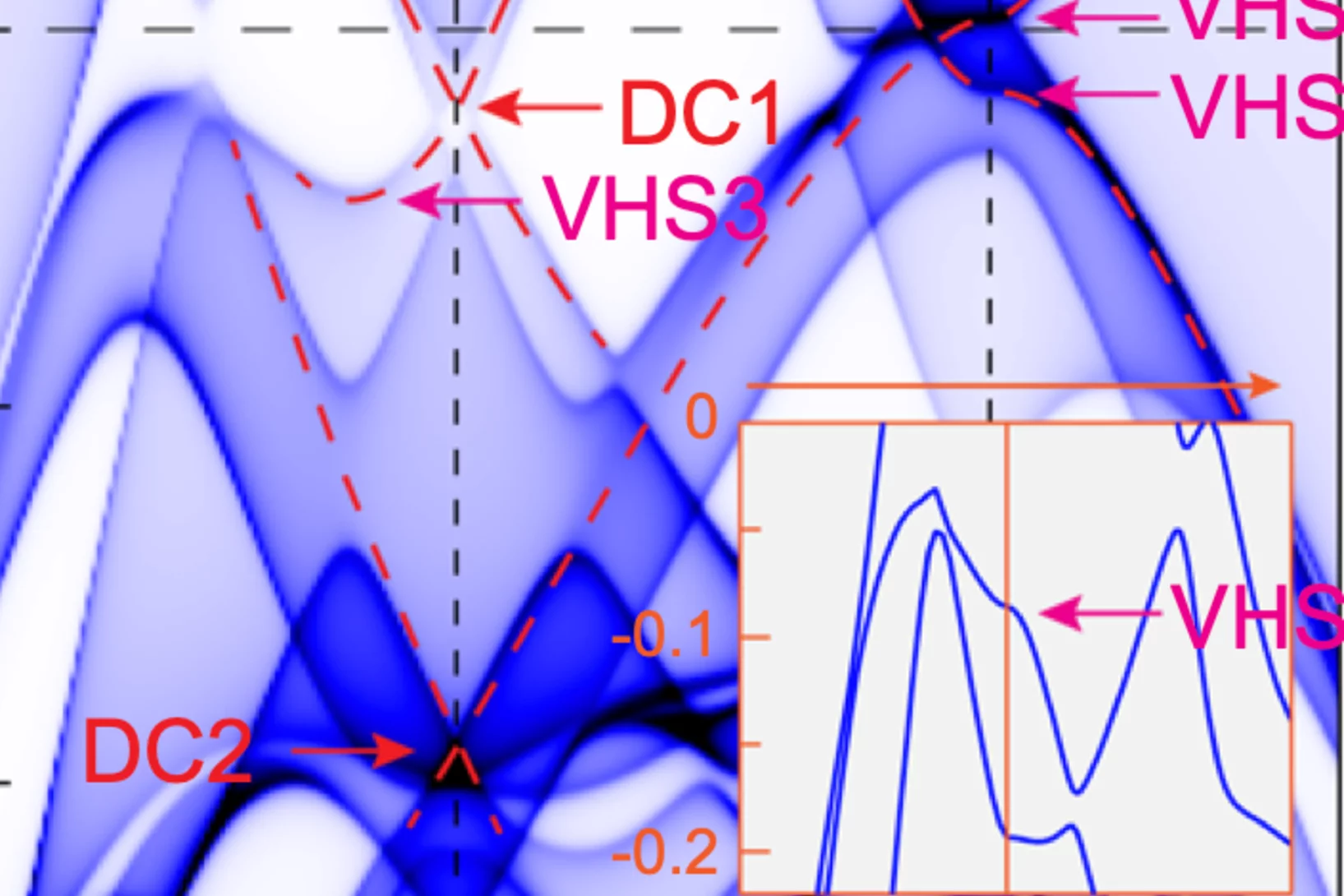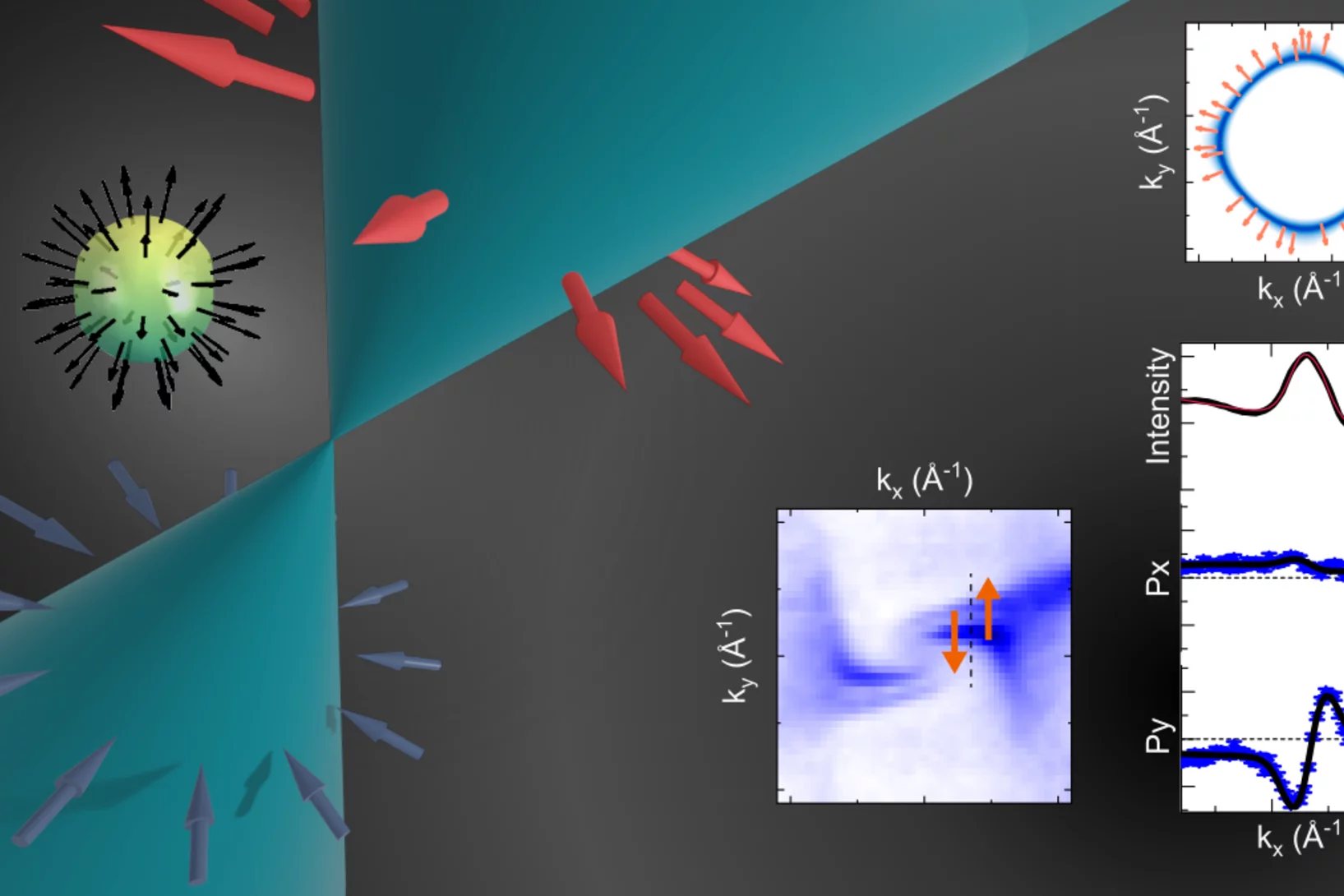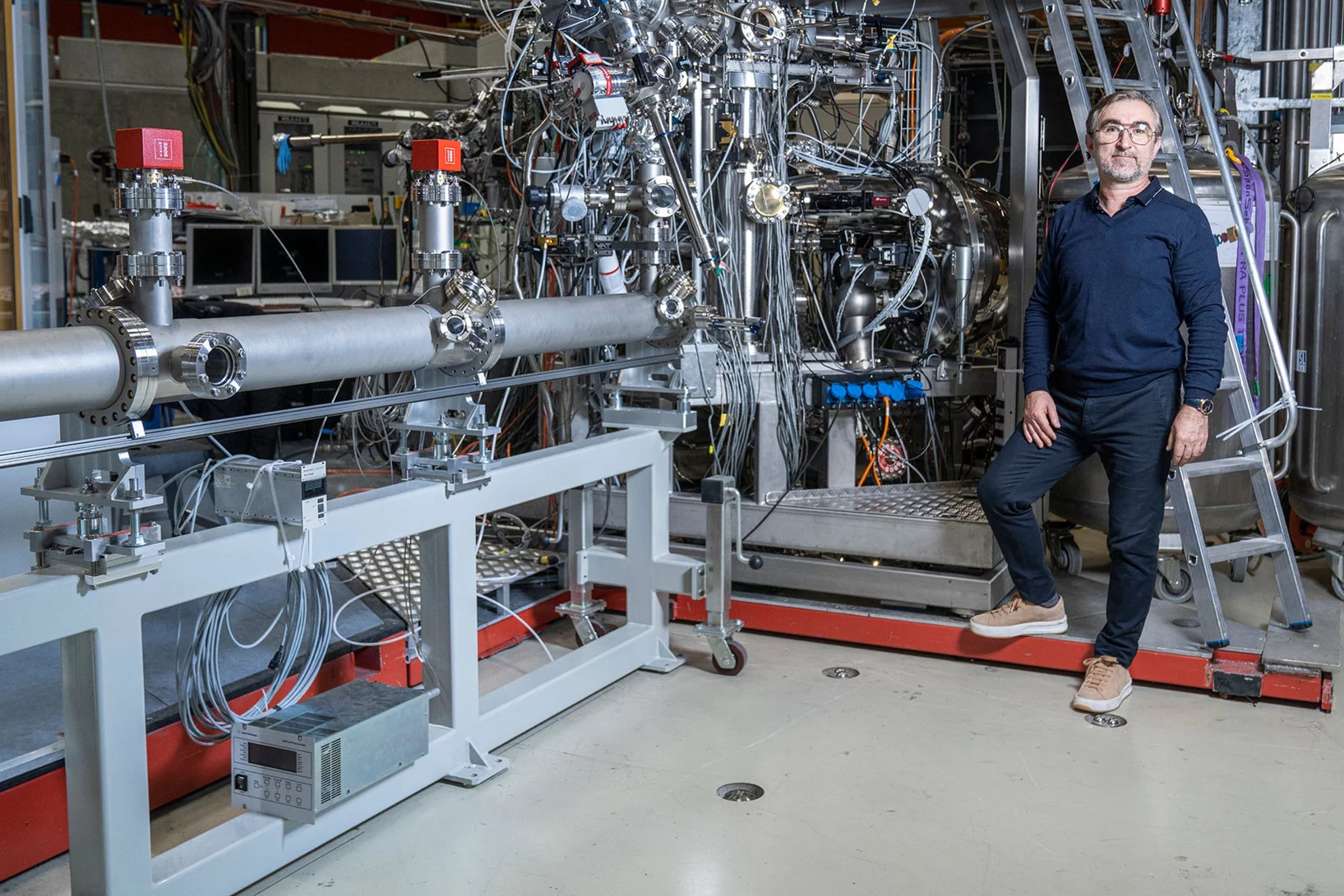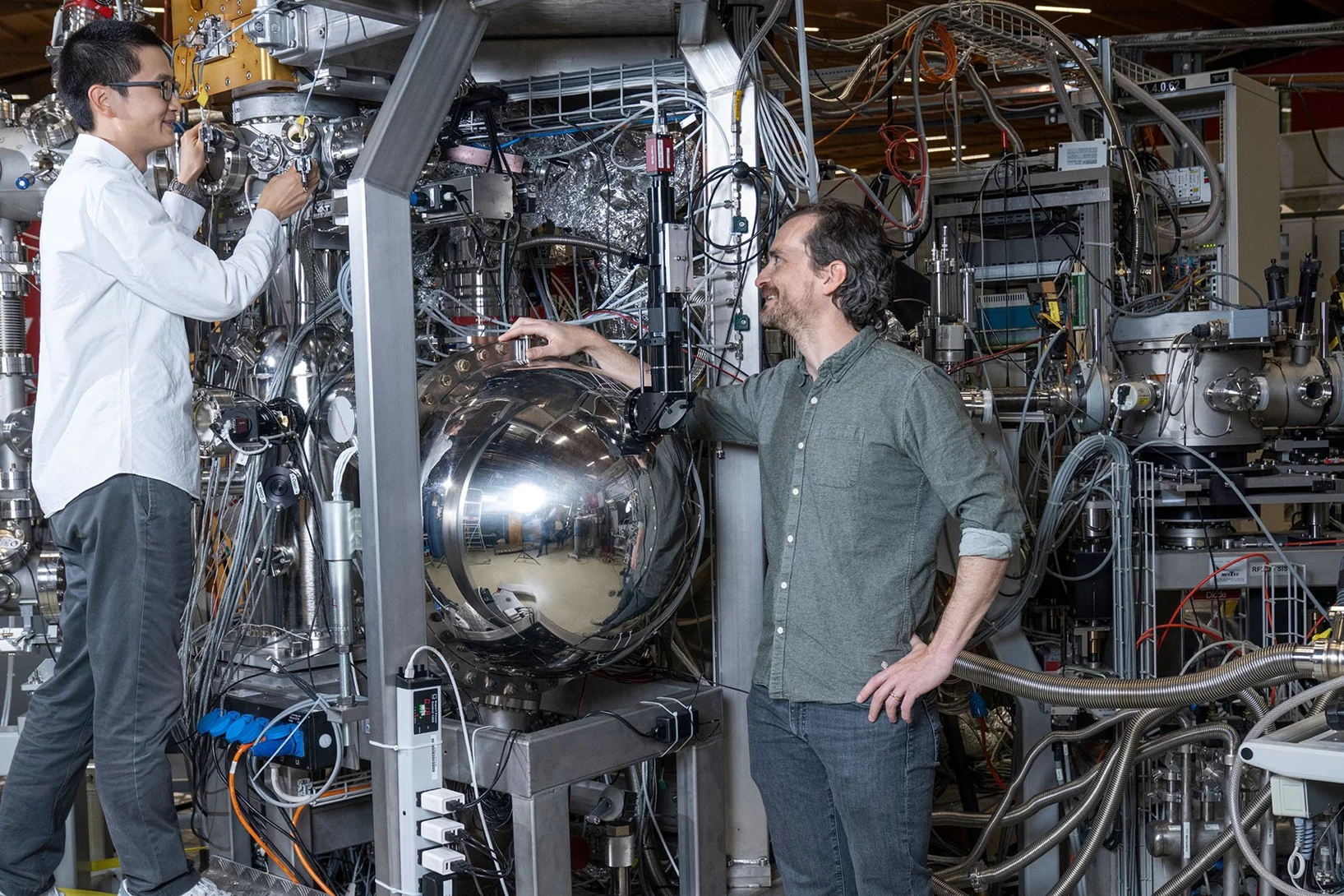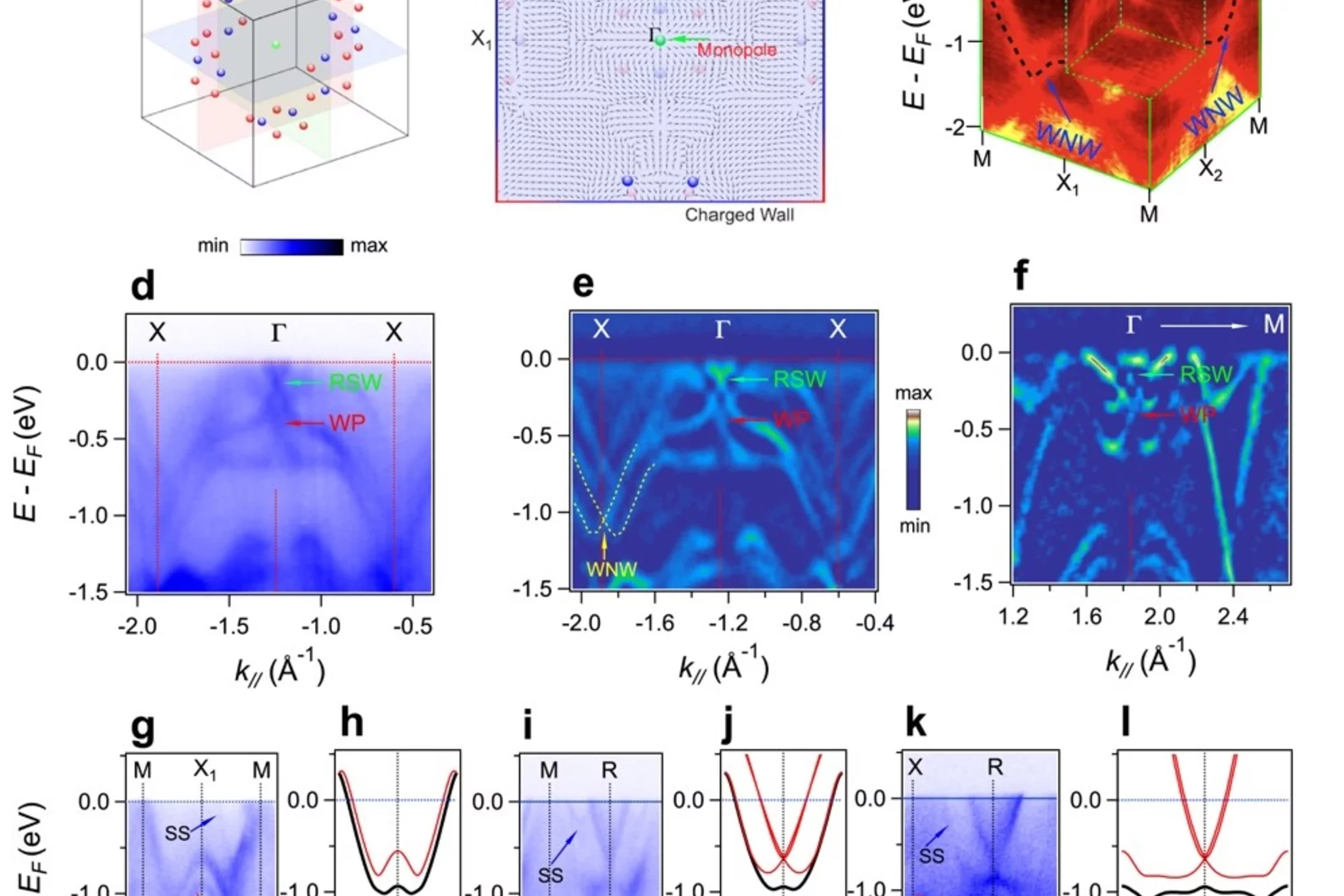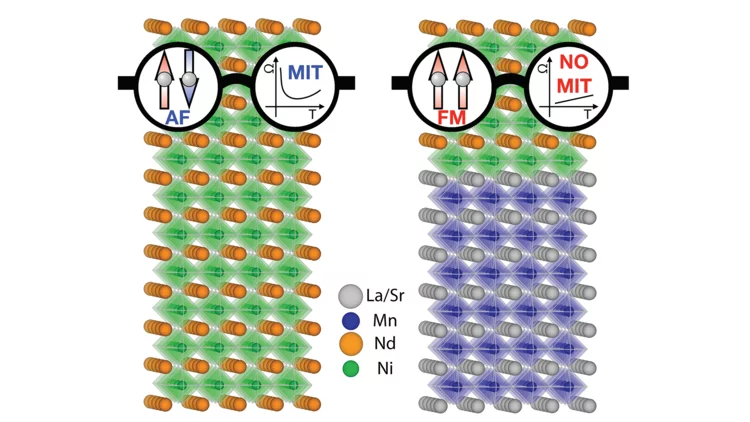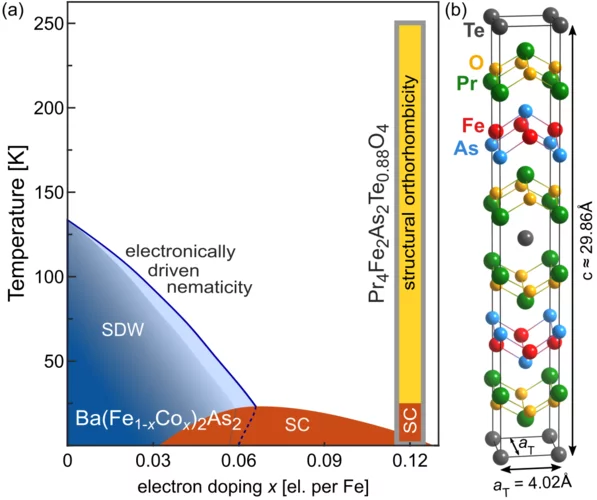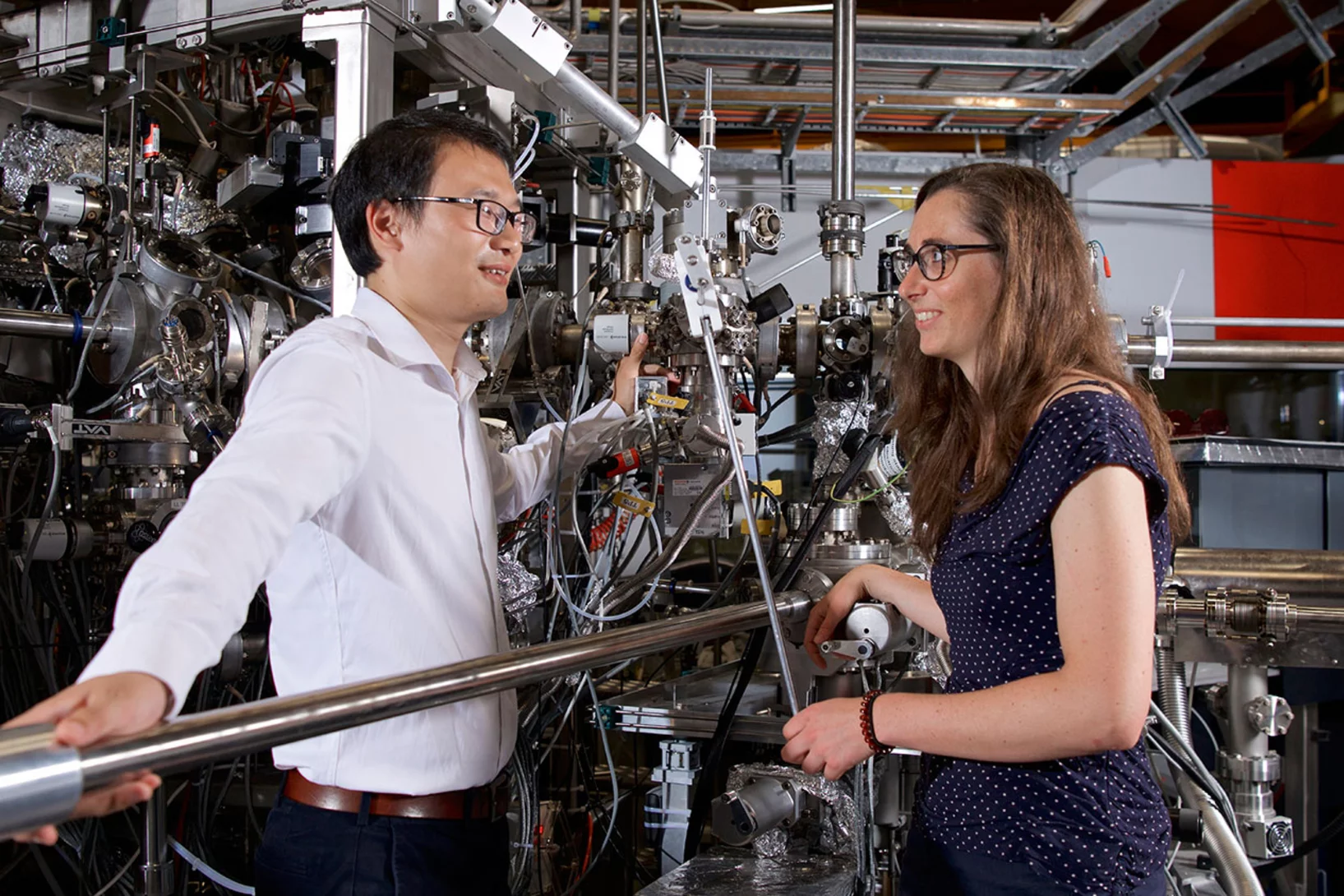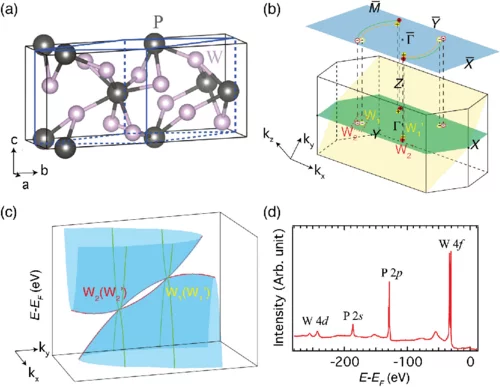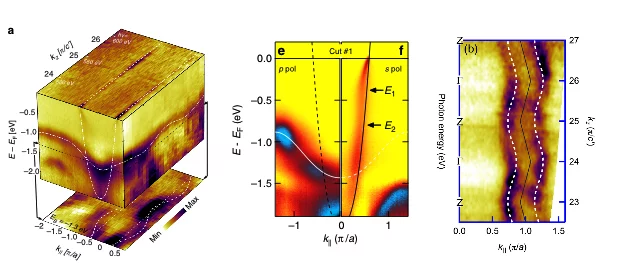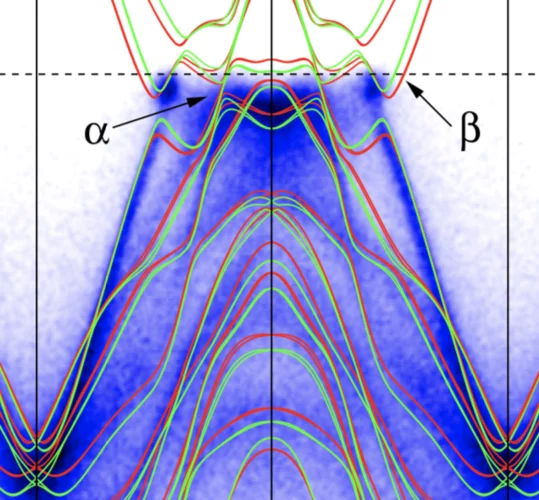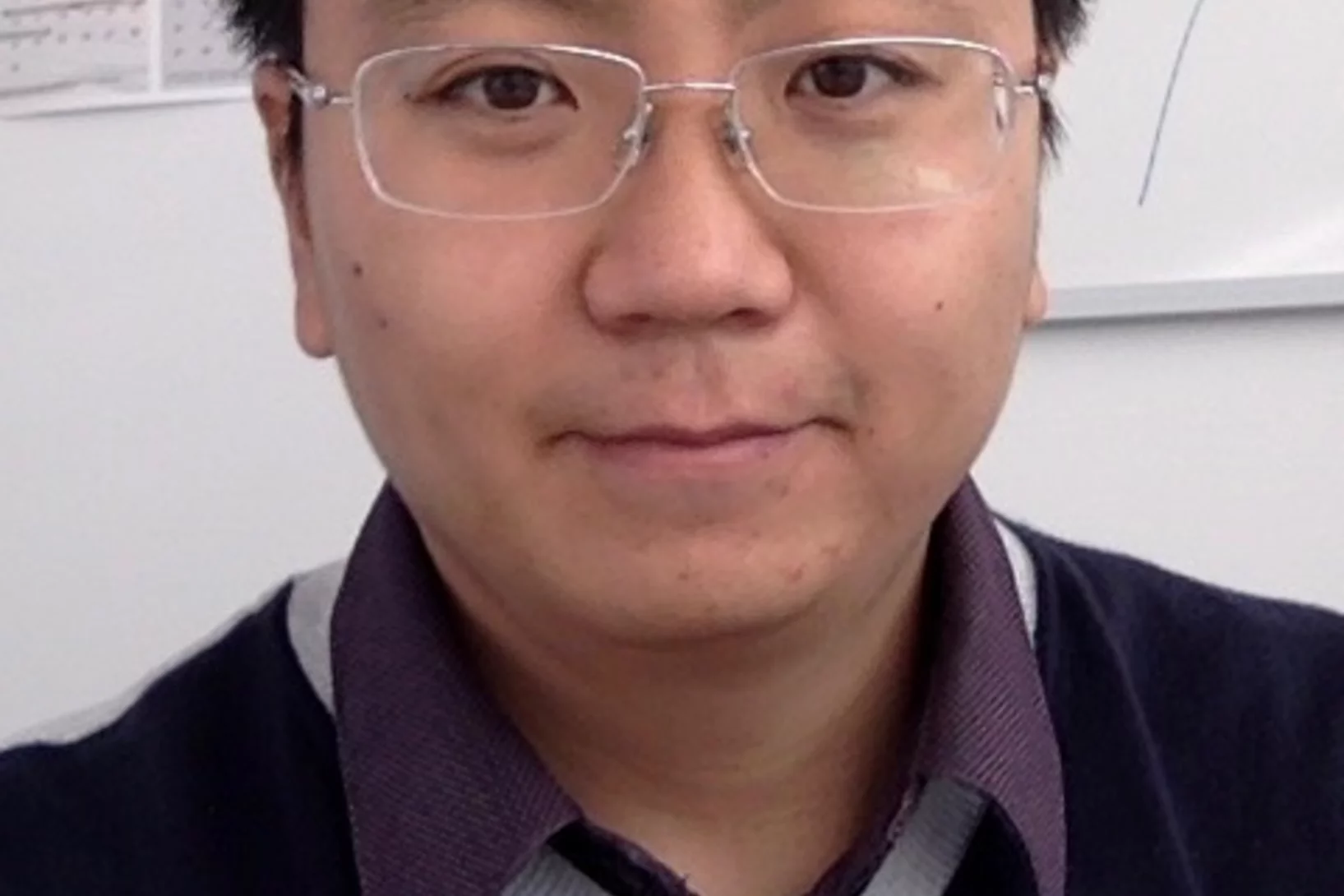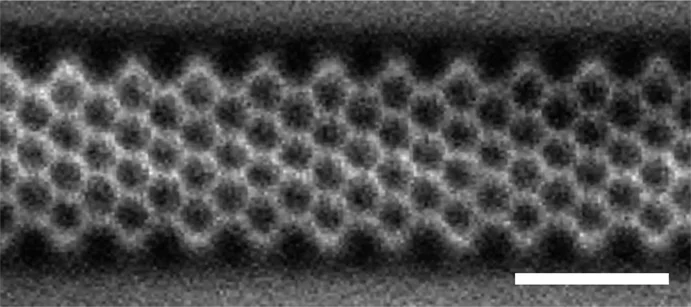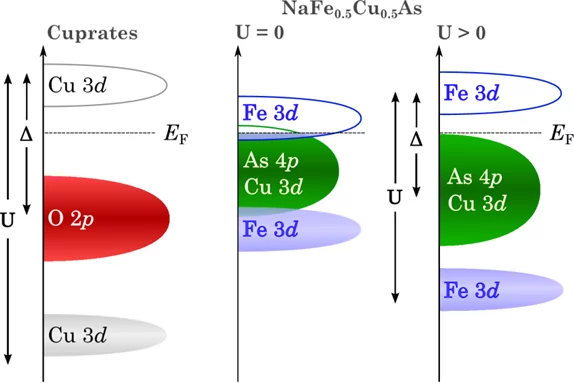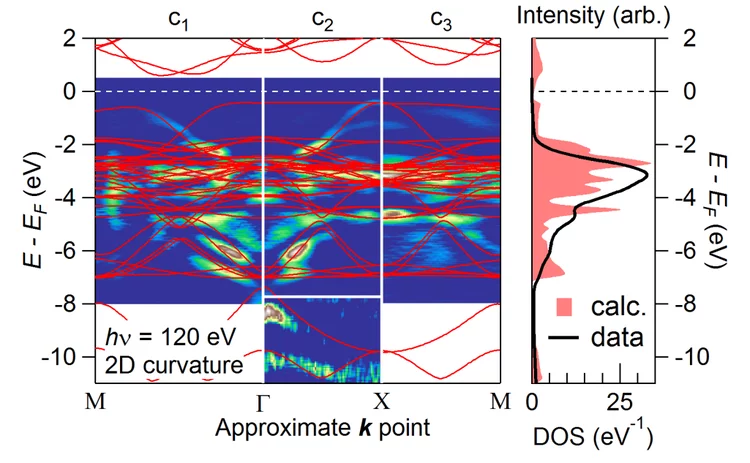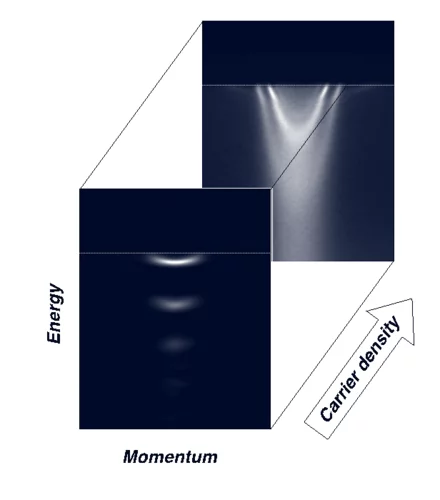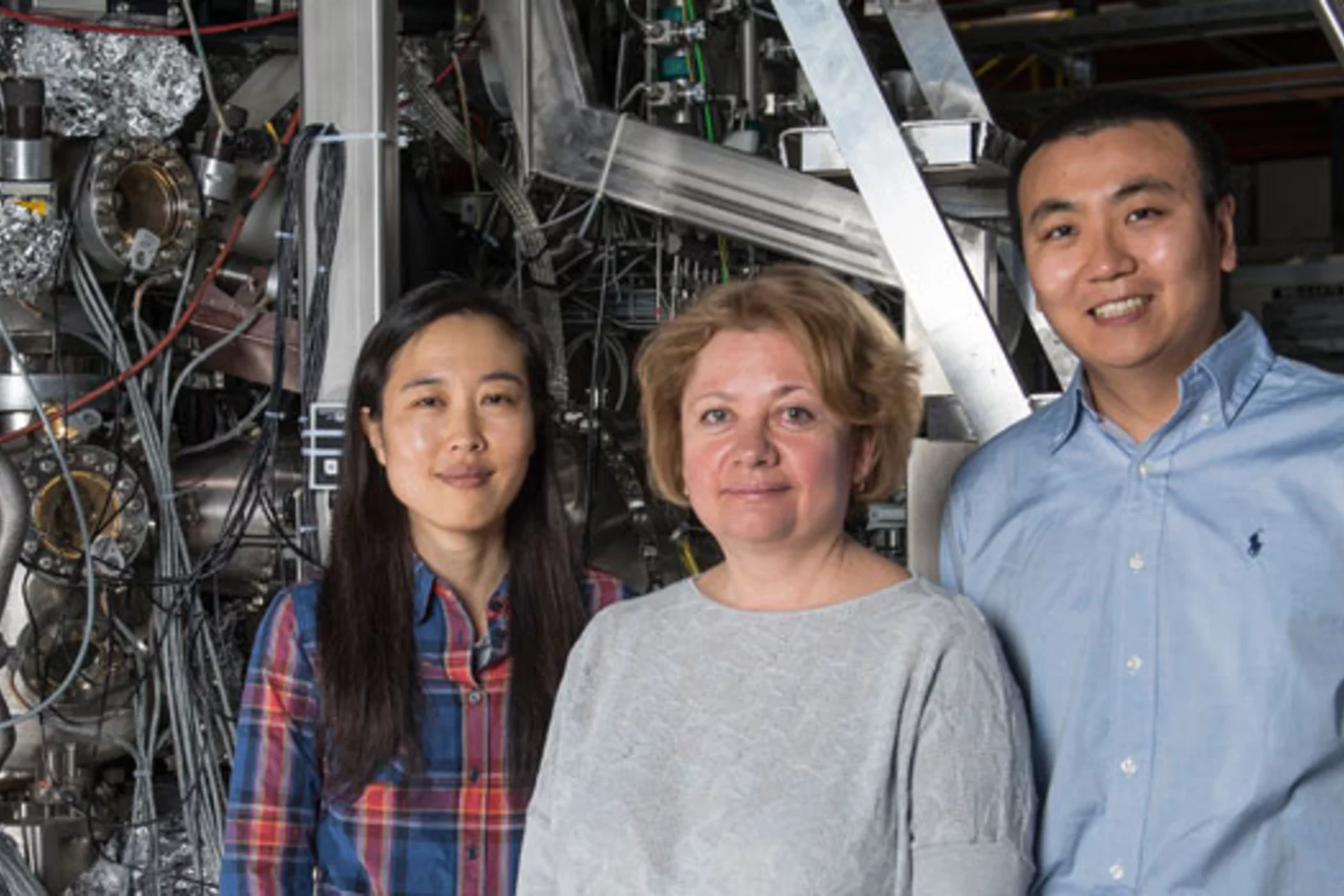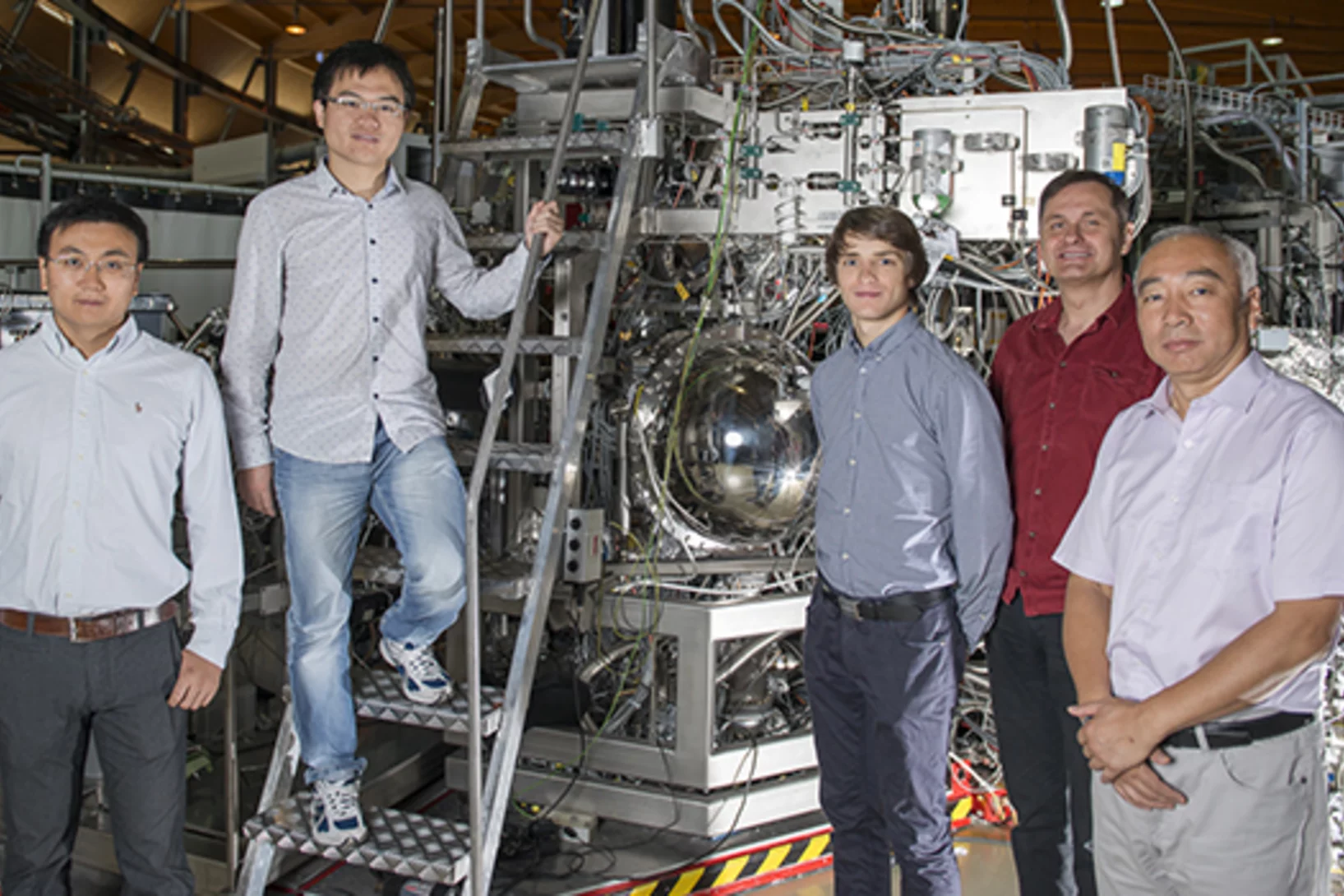Phonon promoted charge density wave in topological kagome metal ScV6Sn6
Charge density wave (CDW) orders in vanadium-based kagome metals have recently received tremendous attention, yet their origin remains a topic of debate. The discovery of ScV6Sn6, a bilayer kagome metal featuring an intriguing √3 × √3 × √3 CDW order, offers a novel platform to explore the underlying mechanism behind the unconventional CDW. Here we combine ...
Weyl spin-momentum locking in a chiral topological semimetal
Spin–orbit coupling in noncentrosymmetric crystals leads to spin–momentum locking – a directional relationship between an electron’s spin angular momentum and its linear momentum. Isotropic orthogonal Rashba spin–momentum locking has been studied for decades, while its counterpart, isotropic parallel Weyl spin–momentum locking has remained elusive in experiments. Theory predicts ...
New materials for the computer of the future
Researchers are identifying and studying material compounds whose unique properties could lead to the development of novel types of chip.
Rich electronic features of a kagome superconductor
Spectroscopic insights into the electronic structure of a family of kagome metals bolsters understanding of exotic quantum phenomena
Mobile excitons as neutral information carriers
These quasiparticles have the potential to revolutionise electronics - if they can move. Mobile excitons have now been observed for the first time in a metal.
Unpaired Weyl Point observed for the first time in crystalline solid
Flows need sources and sinks. That’s why, in a new class of exotic materials called Weyl semimetals, the sources and sinks of Berry curvature – dubbed Weyl points – were believed to exist only in pairs. Now researchers at PSI have observed unpaired Weyl points for the first time in a crystalline solid. This discovery, which upends conventional thinking and the so-called Nielson-Niomiya no-go theorem, demonstrates the unique properties of "nodal wall" Weyl semimetals in comparison to conventional Weyl systems having only zero-dimensional Weyl nodes.
Creating novel quantum phases via the heterostructure engineering
Within this synergetic collaboration, PSI scientists have investigated the correlation between magnetic and electronic ordering in NdNiO3 by tuning its properties through proximity to a ferromagnetic manganite layer. The main outcome is that the stray magnetic field from the manganite layer causes a novel ferromagnetic-metallic (FM-M) phase in NNO. This work demonstrates the utilization of heterostructure engineering for creating novel quantum phases.
Novel structural orthorhombicity in an iron-pnictide superconductor
Researchers from University of Zurich describe the experimental observation of a new orthorhombic structural phase in the superconducting iron-pnictide compound Pr4Fe2As2Te0.88O4. In contrast to nematicity found in underdoped iron pnictides this phase transition is not electronically driven.
Weyl fermions discovered in another class of materials
A particular variety of particles, the so-called Weyl fermions, had previously only been detected in certain non-magnetic materials. But now researchers at PSI have experimentally proved their existence for the first time in a specific paramagnetic material.
New study gives compelling evidence that tungsten diphosphide is a type-II Weyl semimetal
Researchers at NCCR MARVEL have combined first principles calculations with soft X-ray angle-resolved photoemission spectroscopy to examine tungsten diphosphide’s electronic structure, characterizing its Weyl nodes for the very first time. In agreement with density functional theory calculations, the results revealed two pairs of Weyl nodes lying at different binding energies. The observation of the Weyl nodes, as well as the tilted cone-like dispersions in the vicinity of the nodal points, provides compelling evidence that the material is a robust type-II Weyl semimetal with broken Lorentz invariance. This is as MARVEL researchers predicted two years ago. The research has been published in Physical Review Letters as an Editor's Suggestion.
Cuprate Trilogy
In a trio of recent papers, a research group from the University of Zürich has made a number of new discoveries about the nature of cuprates' electronic structure and orbital composition. The results have important implications for superconductivity and pseudogaps in cuprates, and even the existence of type-II Dirac fermions in oxides.
Evidence of a Coulomb-Interaction-Induced Lifshitz Transition and Robust Hybrid Weyl Semimetal in Td-MoTe2
Using soft x-ray angle-resolved photoemission spectroscopy we probed the bulk electronic structure of Td-MoTe2. We found that on-site Coulomb interaction leads to a Lifshitz transition, which is essential for a precise description of the electronic structure. A hybrid Weyl semimetal state with a pair of energy bands touching at both type-I and type-II Weyl nodes is indicated by comparing the experimental data with theoretical calculations.
Dr. Nan Xu awarded SPS 2017 Prize in Condensed Matter Physics
The SPS 2017 Prize in Condensed Matter Physics, sponsored by IBM, has been awarded to Dr. Nan Xu for his excellent work on topological quantum states. Dr. Nan Xu is a joint postdoc of Paul Scherrer Institute (PSI) and the École Polytechnique Fédérale de Lausanne (EPFL).
Realization of a combined band-Mott insulator
For decades, the mechanism of Mott phase in Ca2RuO4 has puzzled researchers. This material is a paradigmatic case of multi-band Mott physics including spin-orbit and Hund's coupling. Progress has been impeded by the lack of knowledge about the low-energy electronic structure. With our recent contribution, we provided-- using angle-resolved photoemission electron spectroscopy -- the band structure of the paramagnetic insulating phase of Ca2RuO4.
Better graphene nanoribbons for electronics applications
Turning the semimetal graphene into a technologically useful semiconductor is challenging. One way of opening a band gap is to cut graphene into nanometre-wide ribbons, but even atomic-level roughness at the ribbon edges can seriously degrade the mobility of charge carriers. Recent advances in on-surface chemistry have made it possible to obtain graphene nanoribbons with atomically precise edges through direct synthesis from molecular building blocks. Here, we report the synthesis, full structural and electronic characterization of 9-atom wide graphene nanoribbons with significantly improved electronic properties.
Novel insulating phase in iron-pnictide materials
The first example of an insulating phase which is close to the superconducting phase in an iron-pnictide system has been recently observed in heavy Cu-doped NaFe1-xCuxAs (x > 0.3). A combined study by angle-resolved photoemission spectroscopy (ARPES) and density functional theory (DFT) calculations revealed that on-site Coulomb repulsion and enhanced Hund’s rule coupling are responsible for the insulating behavior. The results show that the insulating phase in NaFe0.5Cu0.5As resembles the situation in the parent compounds of the high-Tc cuprate superconductors.
Shedding light on the origins of high-Tc superconductivity in bismuth oxides
Researchers have overcome a number of challenges in order to employ an advanced probe in the study of an unusual material, barium bismuth oxide (BaBiO3) – an insulating parent compound of a family of high-temperature superconductors known since the late 80s. In order to finally realize the experiments, the researchers grew and studied thin films of the material completely in situ under ultrahigh vacuum conditions. The results show that superconductivity in bismuth oxides emerges out of a novel insulating phase, where hole pairs located on combinations of the oxygen orbitals are coupled with distortions of the crystal lattice.
Tailoring Novel Superconductivity
The Angle Resolved Photoemission Spectroscopy (ARPES) measurements performed on 2DEL at STO surface revealed that, at low carrier density, electrons are always accompanied by a quantized dynamic lattice deformation. Together with the electron, these phonon-cloud formed a new composite quasiparticle called Fröhlich polaron.
New particle could form the basis of energy-saving electronics
The Weyl fermion, just discovered in the past year, moves through materials practically without resistance. Now researchers are showing how it could be put to use in electronic components.
Observation of Fermi-Arc Spin Texture in TaAs
The study of nontrivial topological semimetals (TSM) is an emerging subject, providing a new frontier in topological aspects beyond insulators. Here, we have investigated the spin texture of surface Fermi arcs in the recently discovered Weyl semimetal TaAs using spin- and angle-resolved photoemission spectroscopy. The experimental results demonstrate that the Fermi arcs are spin polarized. The measured spin texture fulfills the requirement of mirror and time-reversal symmetries and is well reproduced by our first-principles calculations, which gives strong evidence for the topologically nontrivial Weyl semimetal state in TaAs. The consistency between the experimental and calculated results further confirms the distribution of chirality of the Weyl nodes determined by first principles calculations.
Electron’s cousin discovered after eighty-six-year search
In a series of experiments at the Swiss Light Source SLS, physicists from the Paul Scherrer Institute PSI have discovered a particle, the existence of which was predicted eighty-six years ago. It is a member of the particle family that also includes the electron, the carrier of electrical currents. The particle now discovered is massless and can exist only within a special class of materials known as Weyl semi-metals.
